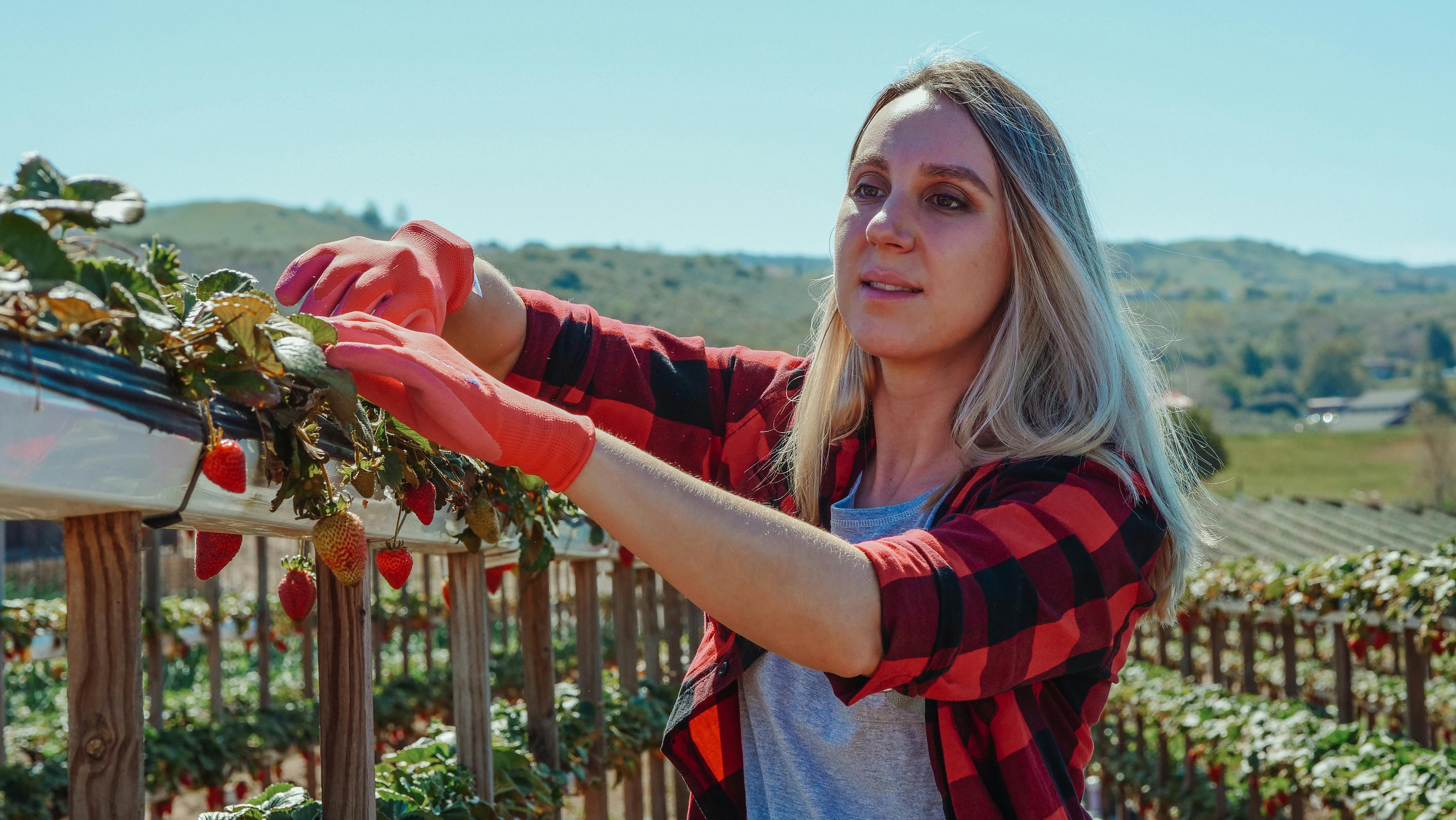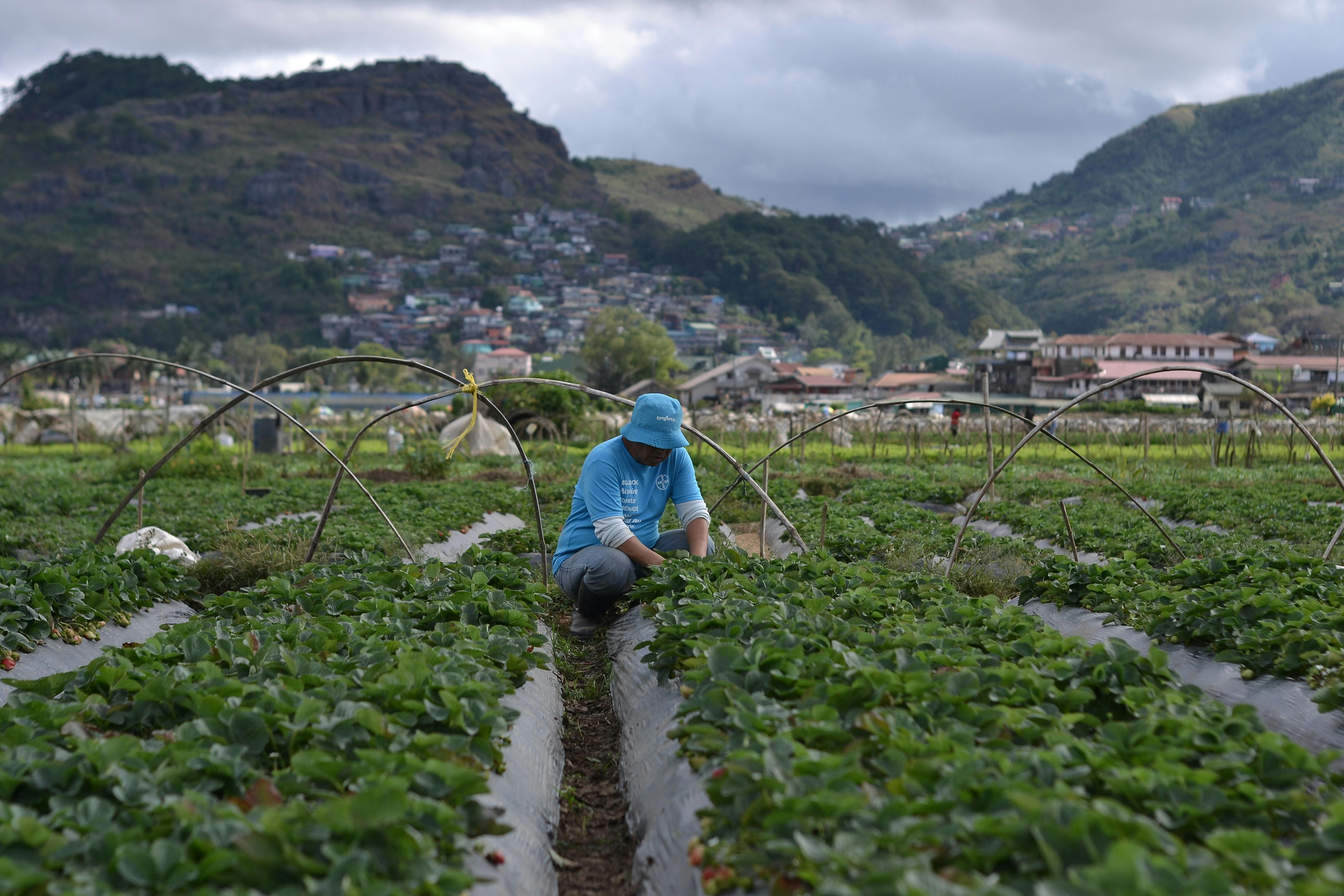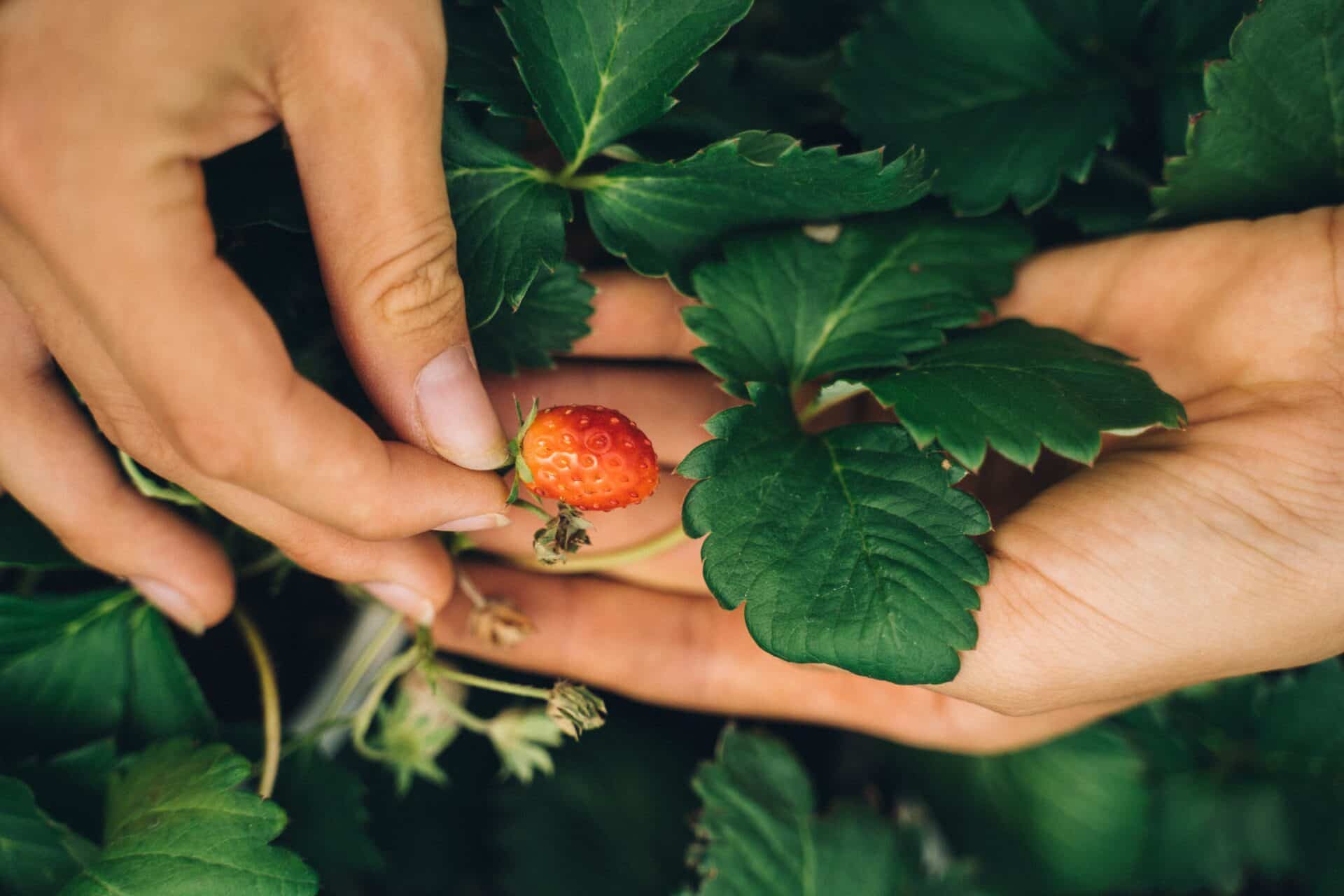If you’ve been eagerly awaiting the arrival of sweet, juicy strawberries from your garden only to be disappointed, it can be disheartening. Strawberry plants are a popular fruit and easy to grow and care for when done correctly. Unfortunately, there are many reasons why your strawberry plants may not be producing fruit. In this article, we’ll explore some common reasons why your strawberry plants may not be producing as much fruit as you’d like.There are several potential reasons why strawberry plants may not be producing. The most common causes include poor soil nutrients, lack of water, excessive heat or cold temperatures, too much shade, and pests or disease. Additionally, the plant may not be mature enough yet to produce fruit or the variety of strawberry planted may not be suited for the climate in which it is growing. To remedy this issue, it is important to assess the conditions that the strawberry plants are growing in and make adjustments as necessary.
Common Causes of Poor Strawberry Production
Strawberry production can be a difficult process, and there are many factors that can contribute to poor yields. Some of the most common causes of poor strawberry production include inadequate soil fertility, improper irrigation, inadequate pest and disease control, and improper harvesting practices.
Inadequate soil fertility is one of the most common causes of poor strawberry production. Strawberries require a well-drained soil rich in organic matter to produce healthy fruit. Low levels of phosphorus, potassium, and nitrogen can lead to stunted growth and reduced yields. Additionally, soils that are too acidic or too alkaline can reduce the availability of certain nutrients for the plant and reduce yields.
Improper irrigation is also a major cause of poor strawberry production. Too little water will cause the plant’s roots to dry out, reducing the uptake of nutrients from the soil and leading to reduced yields. Conversely, too much water can lead to root rot or other diseases that will reduce yields. It is important to determine how much water your plants need and irrigate accordingly to achieve optimal yields.
Inadequate pest and disease control is another major cause of poor strawberry production. Pests such as aphids, mites, slugs, and caterpillars can feed on leaves or fruits, reducing yields significantly if left unchecked. Diseases such as verticillium wilt or powdery mildew can spread quickly throughout a field if not treated promptly with an appropriate fungicide or pesticide. It is important to monitor your plants regularly for pests and diseases in order to take prompt corrective action when necessary.
Finally, improper harvesting practices can also lead to reduced yields. Strawberries must be harvested at the right time in order for them to reach their full flavor potential; if they are left on the vine too long they will become overripe or may rot before they are picked. It is also important not to damage the fruit when harvesting; bruising or squeezing fruits will reduce their shelf life significantly and lead to reduced marketability and lower profits for growers.
Overall, there are many causes of poor strawberry production that growers should be aware of in order to maximize their yields. By taking steps such as ensuring adequate soil fertility, proper irrigation techniques, adequate pest and disease control measures, and proper harvesting techniques growers can ensure that they get maximum yield from their crop each season
Improving Soil Quality for Better Strawberry Production
Soil is one of the most important components for successful strawberry production. It provides essential nutrients and water to the plants, and it also helps to regulate temperature and provide support for plant growth. Poor soil quality can lead to decreased yields, poor fruit quality, and even plant death. Improving soil quality is essential for successful strawberry production, and there are a few steps that can be taken to do this.
One of the most important steps in improving soil quality is testing the soil’s pH level. The ideal pH level for strawberries is between 5.5 and 6.5, so adjusting the pH level if necessary can help ensure optimal nutrient availability. Adding lime or sulfur can help raise or lower the pH level accordingly.
Incorporating organic matter into the soil is also important for improving soil quality because it helps improve drainage, water retention, aeration, nutrient availability, and more. Adding compost or manures are great natural sources of organic matter that can help improve soil quality.
In addition to adding organic matter, applying fertilizer can also help improve soil quality by providing essential minerals and micronutrients that may be lacking in the soil naturally. Fertilizers come in different forms such as granular or liquid forms, so it’s important to choose one that best meets your needs depending on your crop’s requirements and preferences.
Finally, another way to improve soil quality is by rotating crops in order to replenish nutrients that have been depleted from previous crops. Rotating crops with different nutrient requirements helps ensure that the nutrient levels remain balanced over time which helps maintain good overall soil health in the long run.
By following these approaches towards improving soil quality, you will be on your way towards successful strawberry production with higher yields and better fruit quality!
Watering and Fertilizing Practices for Enhanced Strawberry Production
Strawberry production can be enhanced through proper watering and fertilizing practices. It is essential to provide adequate water to the plants as this will help them develop healthy fruits. Watering should be done early in the morning or late in the evening when temperatures are cooler and there is less evaporation. The amount of water needed will vary depending on the type of soil, environmental conditions, and other factors. Additionally, it is important to properly fertilize strawberries with a balanced fertilizer that contains nitrogen, phosphorus, and potassium. This will ensure the plants get all the nutrients they need to grow healthy fruits. Fertilizing should be done twice a season, once at planting time and once after fruiting begins. Applying too much fertilizer can cause nutrient burn which can damage the plants so it is important to follow directions on the fertilizer label carefully. Following these watering and fertilizing practices can help enhance strawberry production.
Identifying Pest Problems on Strawberry Plants
Strawberry plants are vulnerable to several types of pests, including aphids, mites, snails, slugs, and nematodes. Identifying the pest problem is the first step in controlling it. Aphids are small insects that feed on the sap of strawberry plants, causing stunted growth and reduced yields. Mites can cause discoloration and deformation of leaves and fruits. Snails and slugs feed on the leaves of strawberry plants, resulting in ragged holes in the foliage. Nematodes can cause root damage that leads to reduced yields.
Addressing Pest Problems on Strawberry Plants
Once a pest problem has been identified on a strawberry plant, it’s important to take steps to address it quickly in order to minimize damage and preserve yield. Aphids can be controlled with insecticidal soap or by releasing beneficial insects such as ladybugs or lacewings into the area. Mites can be managed with miticides or neem oil applications. Slugs and snails can be controlled by hand-picking them from the plants or using slug baits around the plant base. Nematodes can be managed through crop rotation and using resistant varieties of strawberry plants.

Managing Weed Pressure to Improve Strawberry Production
Weed pressure is one of the key factors that can affect strawberry production. In order to maximize yields, it is essential for growers to manage weeds effectively. There are several strategies that can be implemented to reduce weed pressure and improve strawberry production.
One of the most effective ways to manage weed pressure is through the use of herbicides. Herbicides can be used to control various types of weeds, including broadleaf, grassy and sedge weeds. They can also be used in combination with other methods such as mulching and cultivation.
Mulching can be an effective way to reduce weed pressure in strawberry fields. Mulches such as straw, wood chips or plastic sheeting can help suppress weeds by blocking light and preventing germination. Mulches also help retain soil moisture which helps promote healthy plant growth.
Cultivation is another method for managing weed pressure in strawberries. This involves using mechanical methods such as hoeing, hand weeding or flame weeding to remove weeds from the field. Cultivation should be done carefully so as not to damage the strawberry plants or roots.
Another way to reduce weed pressure is by planting cover crops between rows of strawberries. Cover crops such as clover and rye provide a physical barrier against weeds while also helping improve soil fertility and structure over time.
In addition, growers should pay close attention to their irrigation practices when managing weed pressure in their fields. Over-watering can lead to increased weed growth while under-watering can cause stress on the plants which makes them more susceptible to pest and disease problems.
Overall, proper management of weed pressure is essential for optimizing strawberry production yields. By utilizing a combination of herbicides, mulches, cultivation and cover crops alongside careful irrigation practices, growers will be able to effectively manage weeds and ensure maximum yields from their crop.
Pruning and Training Techniques to Promote Healthy Strawberry Plant Growth
Pruning and training techniques are essential for promoting healthy strawberry plant growth. Pruning ensures that the plant is receiving enough sunlight and encourages the development of a strong, healthy root system. Training involves directing the growth of the plant’s branches to create a sturdy frame that will support the fruit-bearing canes. When done properly, these two techniques can result in an abundant harvest of delicious strawberries.
Pruning is best done in late winter or early spring when the plant is dormant. To prune, carefully cut away any dead or diseased wood, as well as any weak or thin branches. This will help to remove any potential sources of disease and promote better air circulation around the plant. Additionally, if there are too many branches on one side of the plant, pruning can be used to balance them out and create a more uniform shape.
Training involves tying or weaving together some of the stronger branches to form a framework for the plants growth. The goal is to create a balanced structure with even spacing between branches, which will help support larger fruit-bearing canes later on. Additionally, training helps to keep foliage off of the ground which helps reduce disease risk in areas with high humidity levels.
When it comes time for harvesting strawberries, proper pruning and training techniques can make it easier to reach all of the ripe fruits without damaging any of the remaining berries or branches. Pruning and training also help ensure that you get maximum yields from your strawberry plants each year by providing optimal sunlight exposure and creating an environment for healthy root growth. With proper care and attention, you’ll be able to enjoy an abundance of delicious strawberries season after season!
Preventing Diseases that Affect Strawberry Plant Productivity
Diseases can have a devastating effect on strawberry plant productivity, leading to reduced crop yields and crop losses. It is therefore important to take measures to prevent diseases from affecting strawberry plants. One of the most effective ways to do this is by selecting disease-resistant cultivars for planting in your garden or field. Many varieties of strawberries have been bred specifically for disease resistance, so it is important to research and choose a variety that will suit your needs. Additionally, following recommended cultural practices can help to reduce the incidence of diseases on strawberry plants. These include proper fertilization and irrigation, as well as avoiding overcrowding when planting and providing adequate air circulation in the garden or field.
It is also essential to practice good sanitation in order to prevent diseases from spreading among plants in the garden or field. Always thoroughly clean up any plant debris after harvesting or pruning the plants and dispose of it away from the garden or field. It is also important to avoid working with wet foliage, which can spread fungal spores, and use only clean gardening tools when handling plants. Additionally, if you notice any signs of disease on your strawberry plants, it is important to remove affected parts of the plant immediately.
Finally, applying a fungicide can help protect against diseases such as powdery mildew and anthracnose that can affect strawberry production. When using a fungicide, always follow the directions on the label carefully and apply it at the recommended rate and frequency. If you are unsure about using a fungicide or have any questions about preventing diseases on your strawberry plants, consult with your local county extension agent for advice.
By taking these steps you can help protect your strawberry plants from disease and ensure maximum productivity throughout the growing season.

Conclusion
It is important to remember that strawberry plants take time and patience to produce. In addition to proper planting and maintenance techniques, the success of the crop will depend on the type of strawberry plant, soil quality, climate conditions, and other factors. If none of these are up to par, your strawberry plants may not be producing. It is important to take extra steps such as providing additional fertilizers or irrigation if needed in order for the strawberry plants to thrive. Proper monitoring and care are essential for ensuring that your strawberry plants can produce a bountiful harvest.
Overall, there are many possible reasons why your strawberry plants may not be producing. From improper planting techniques to inadequate care or environmental conditions, it is important to identify what may be hindering your plants from producing fruits so that you can take corrective action. With proper research and planning, you can ensure that your strawberry plants will have all the right conditions for producing a plentiful harvest.



